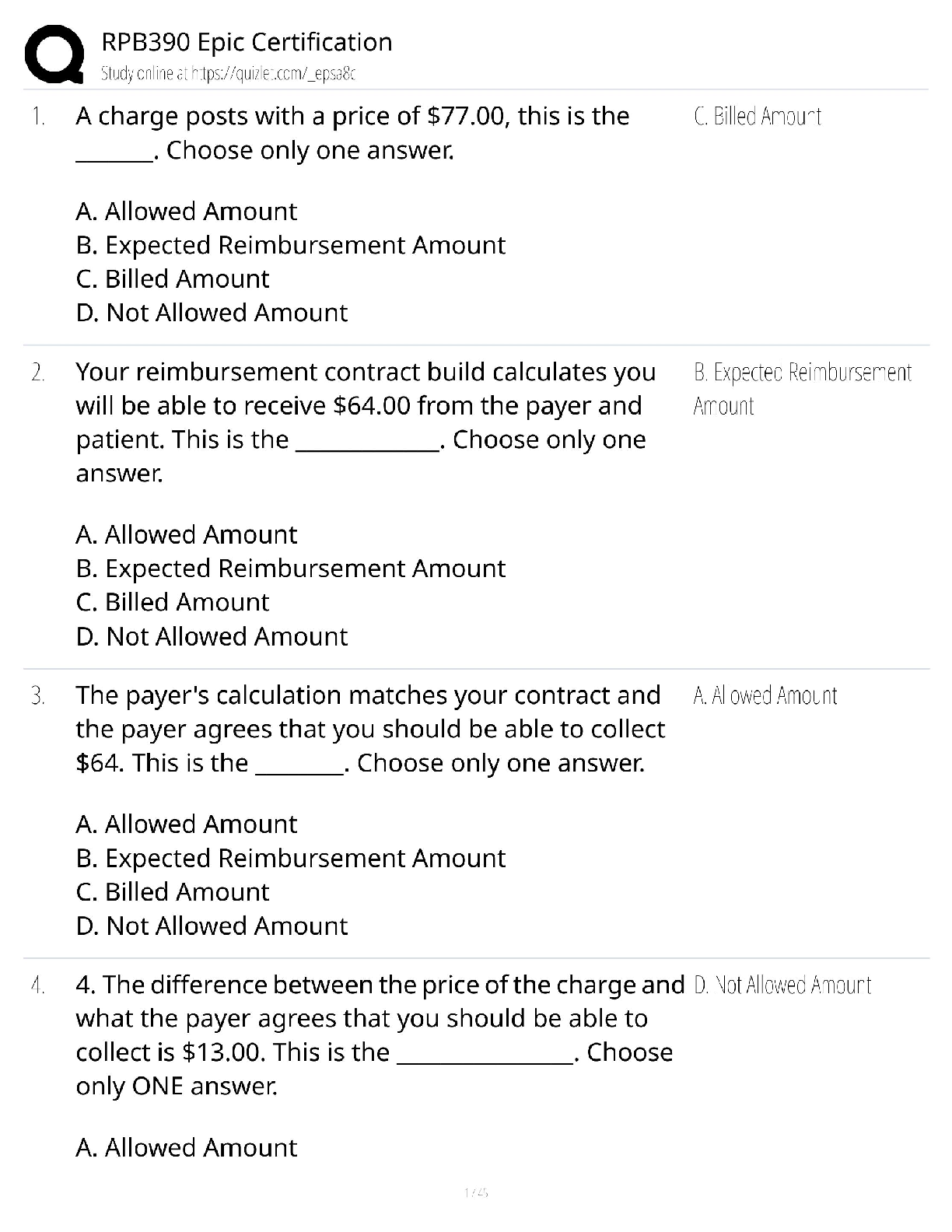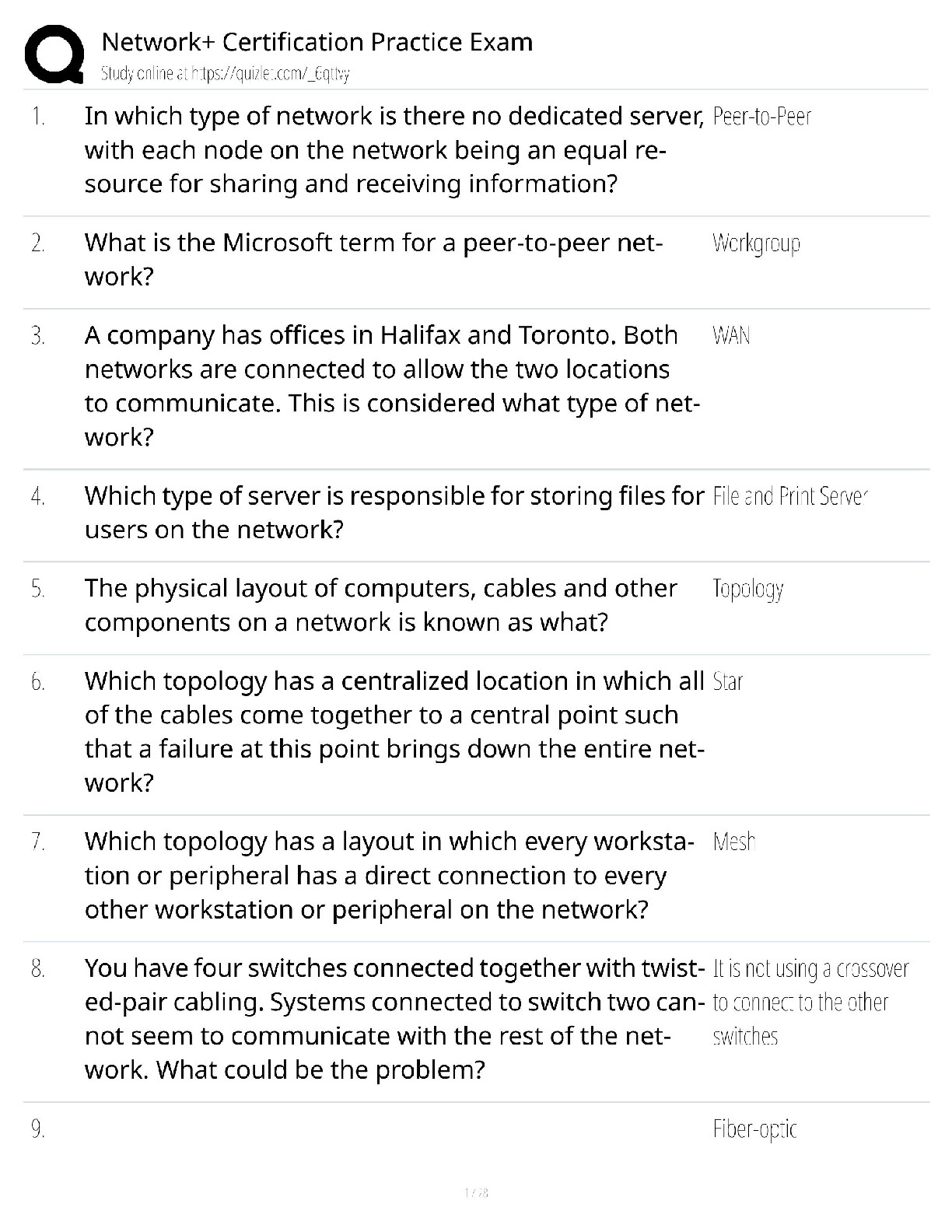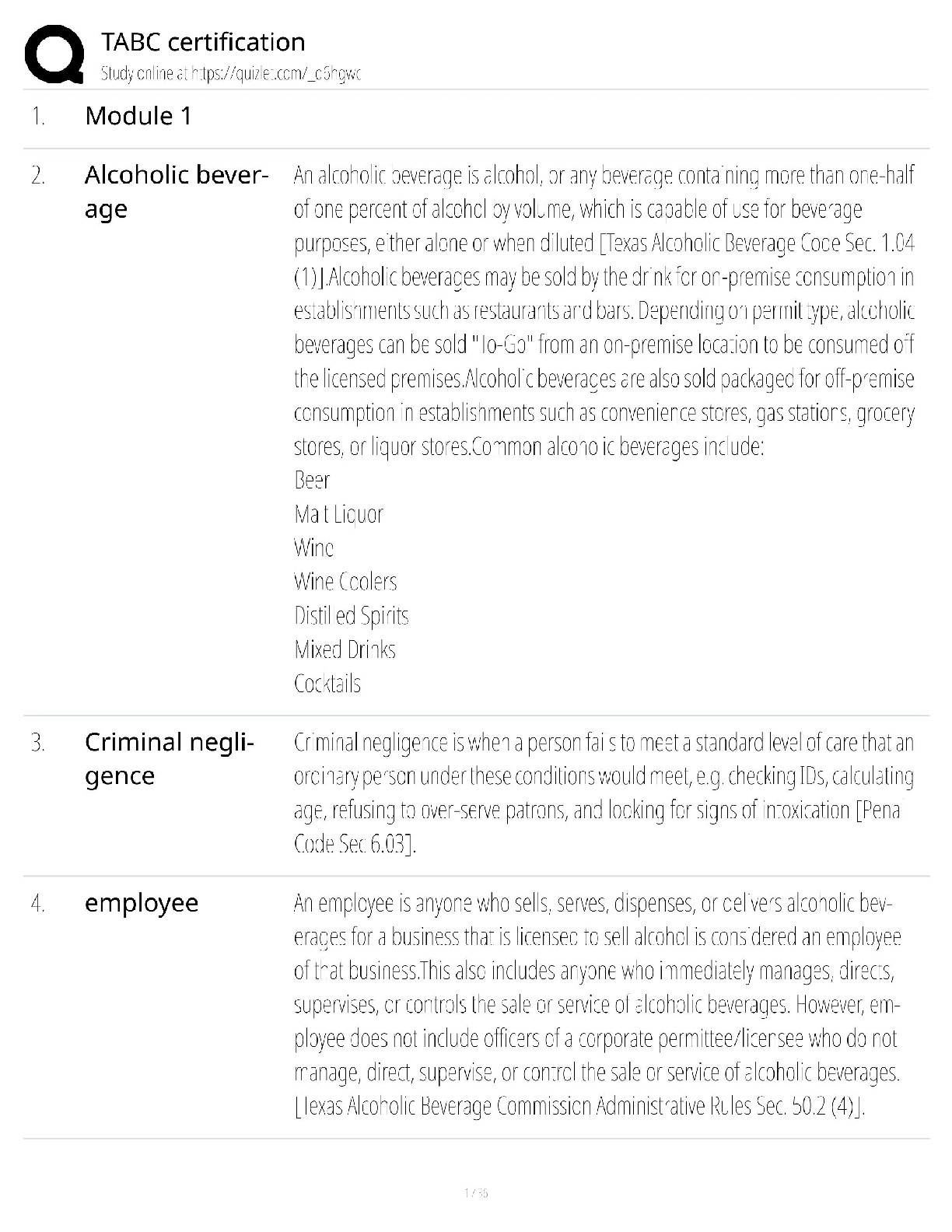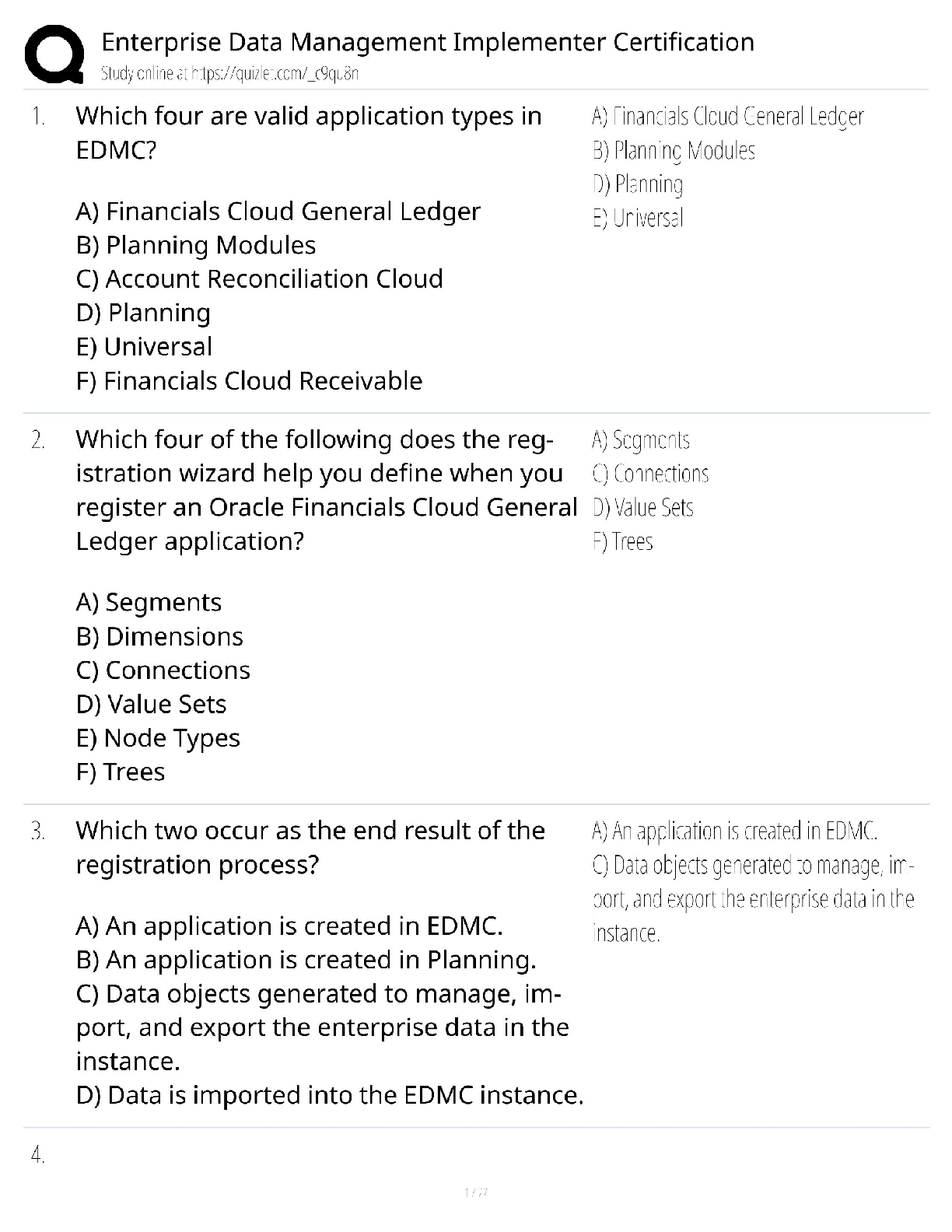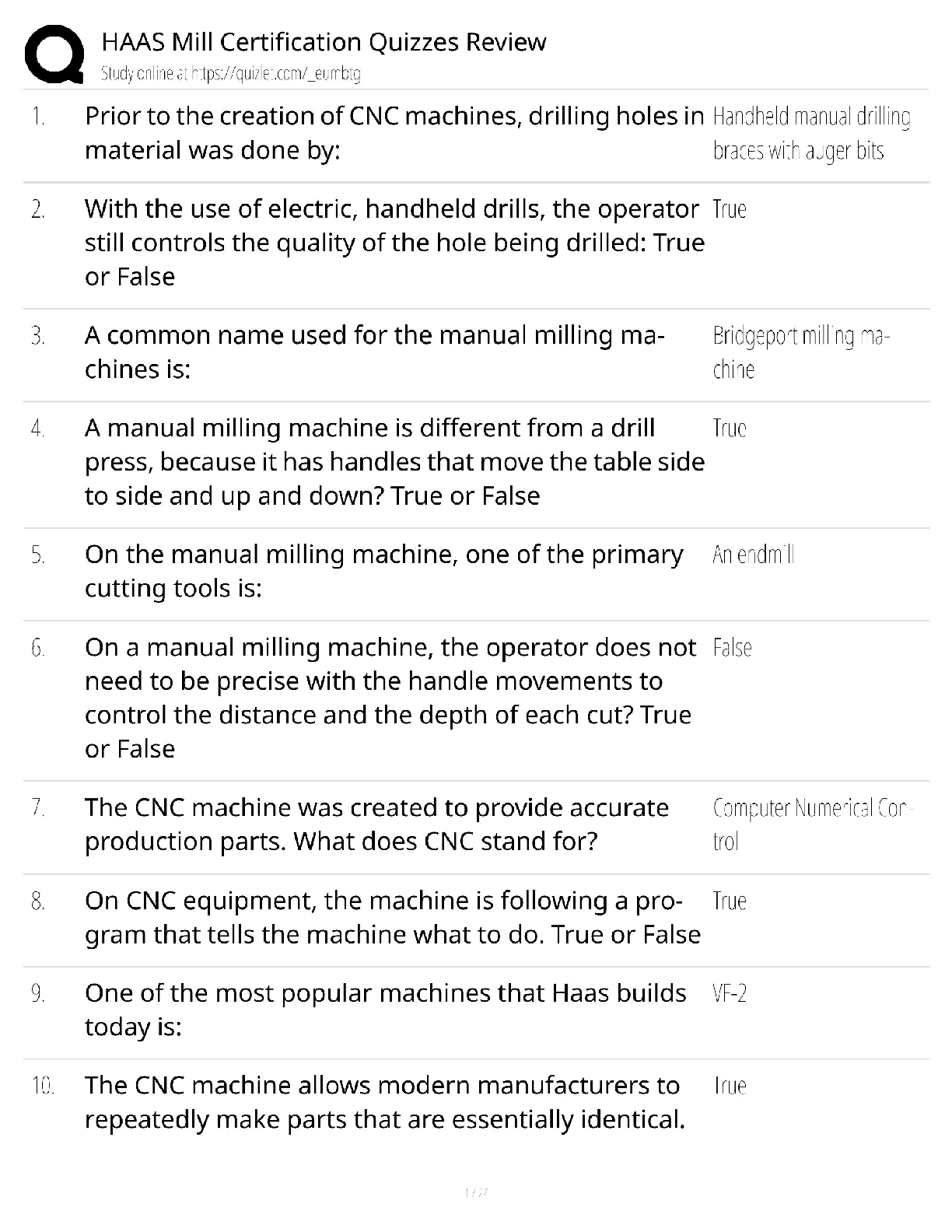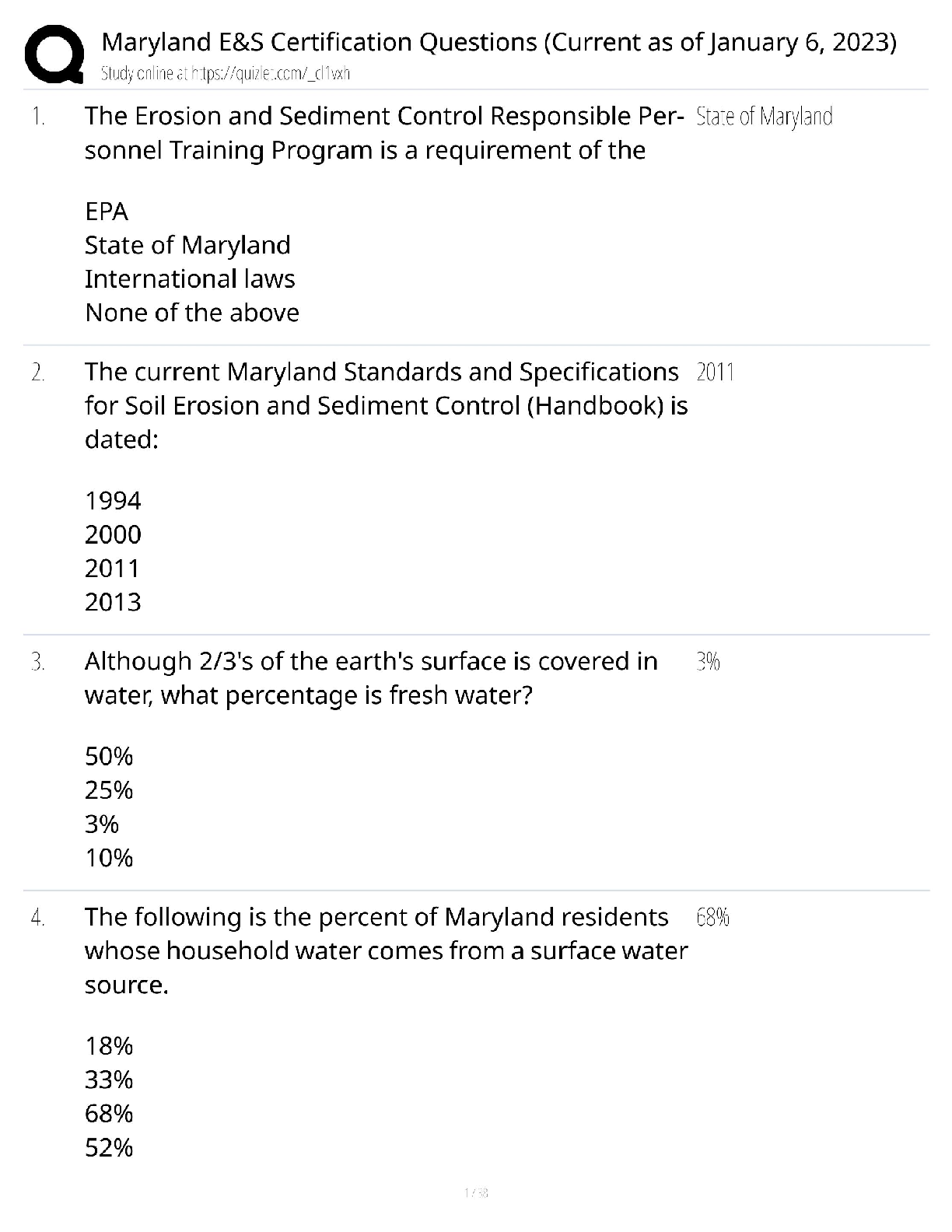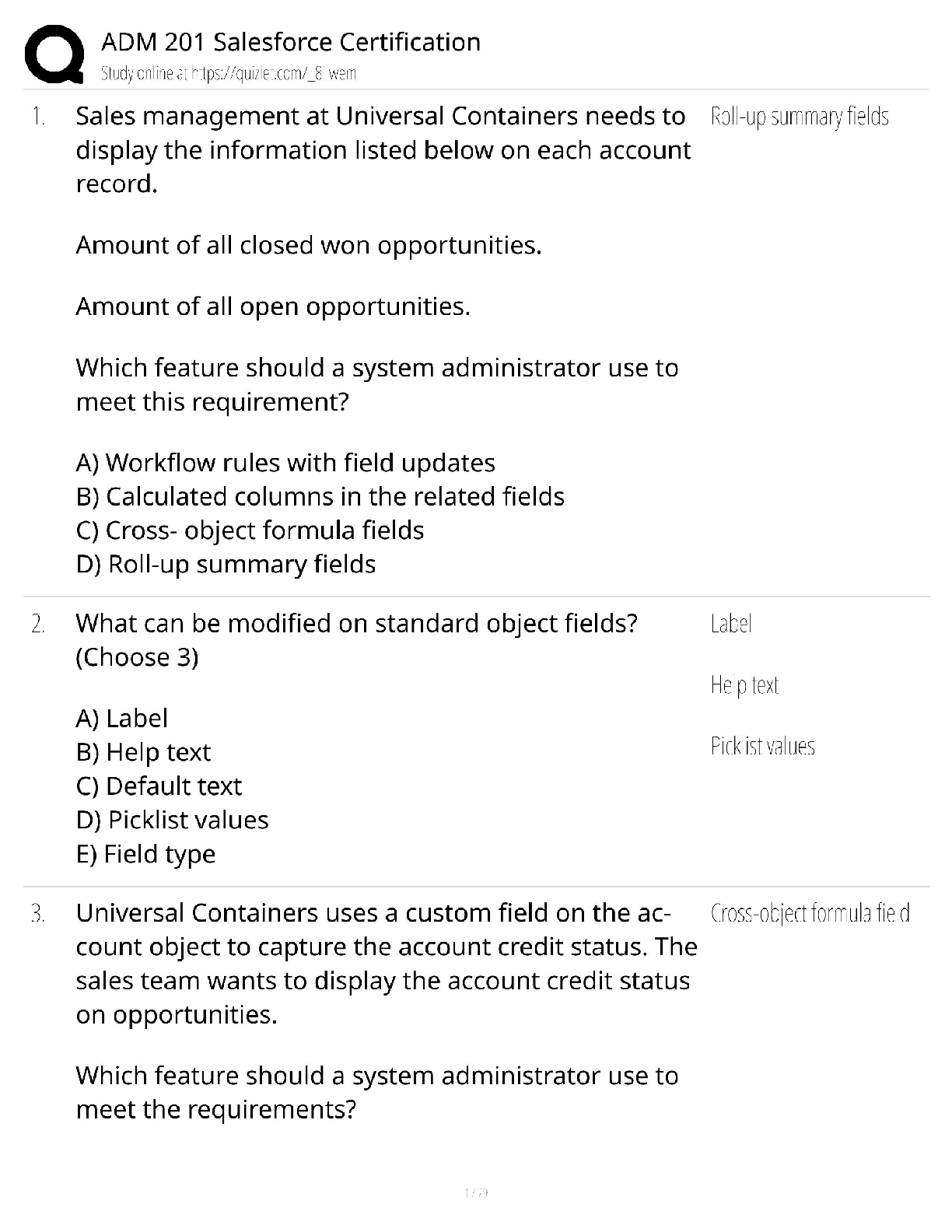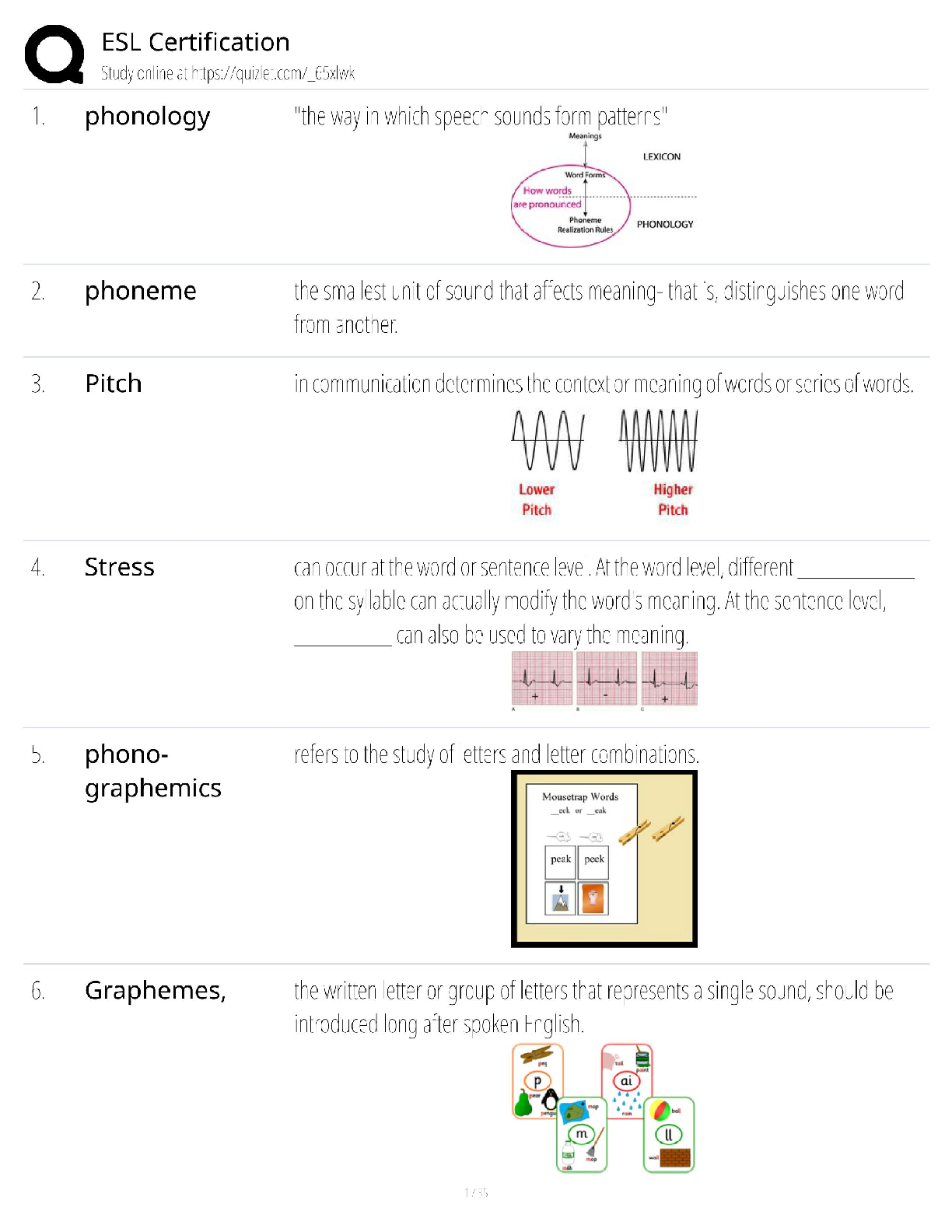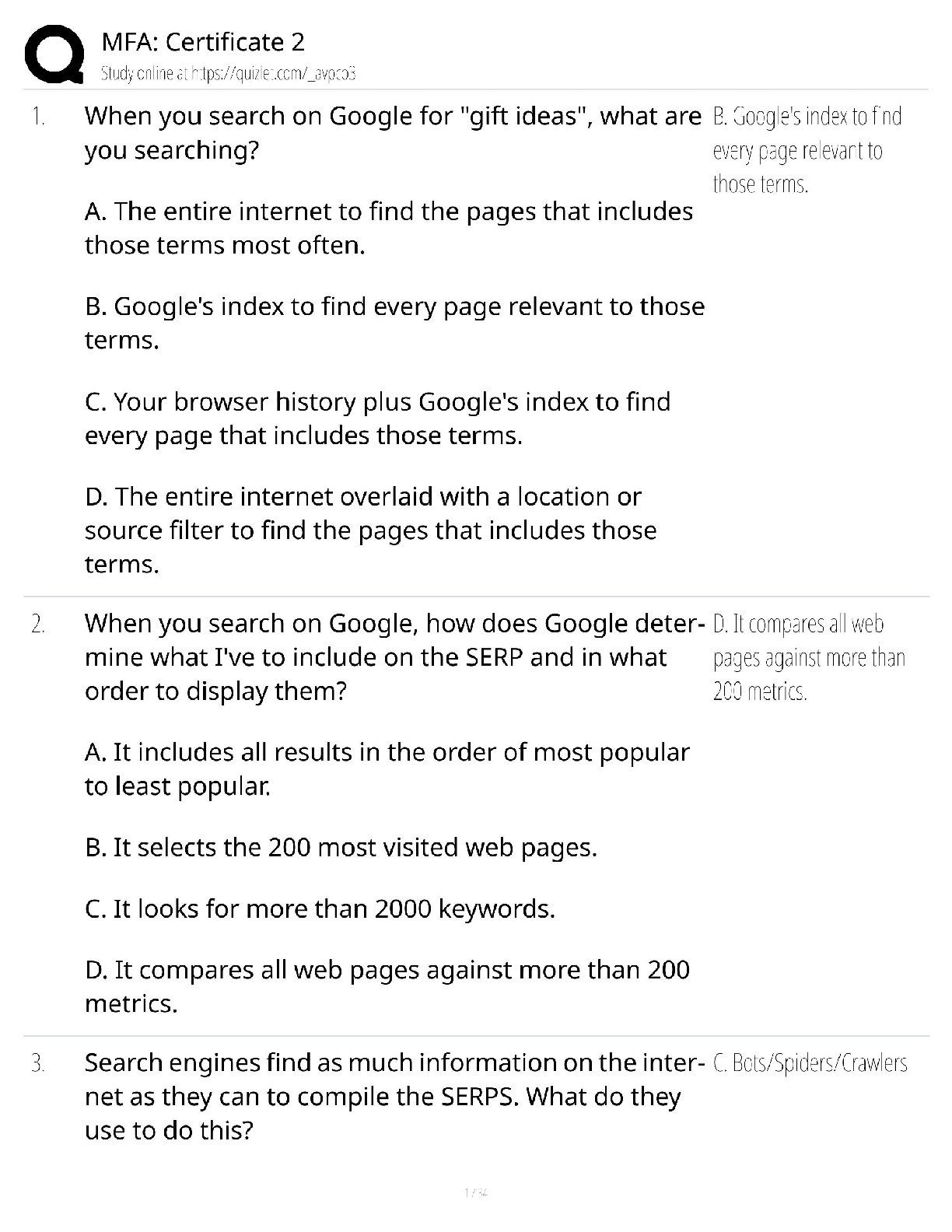*NURSING > QUESTIONS & ANSWERS > NRNP 6566 Week 4 Knowledge Check (100% Correct) Verified Answers (All)
NRNP 6566 Week 4 Knowledge Check (100% Correct) Verified Answers
Document Content and Description Below
A 47 year old male admitted with an infected elbow wound. On his second day in the hospital you find him in his room confused and agitated. Vital signs are as follows: Temperature – 96.2 °F Pu ... lse -140 beats per minute Respirations – 40 breaths per minute Blood Pressure – 90/40 mmHg Labs include a WBC count of 3,000 Pt weighs 185 pounds Further assessment of him includes: Urine output of 100cc for the last 8 hours Pulse oximetry of 88% on room air Pallor What is your working diagnosis? Corr ect Ans wer: There are 4 stages of sepsis. This patient meets the criteria for septic shock Temp – 96.2 Heart Rate 140 Respirations 40 WBC 3000 Source of infection – elbow wound Organ dysfunction – confused, urine output of 12 cc per hour (min 42 per weight) Blood pressure of 90/40 with a MAP of 56.5 A 50 year old woman is thought to be in septic shock. What physical assessment findings would you expect to find to confirm this type of shock? Correct Answer: Hypotension is the common finding in all shock states. In septic shock, you would also expect to find: Tachycardia Full bounding pulses Pink, warm, flushed skin Tachypnea Decreased urine output Fever Hemodynamic measures would indicate a decreased cardiac output, decreased systemic vascular resistance, and a decreased central venous pressure. A 56 year old man is thought to be in hypovolemic shock. What are the initial interventions for a patient in hypovolemic shock? Correct Answer: Initial treatment would include: *identify and stop fluid loss / bleeding if possible *Crystalloid fluid replacement – 0.9% NS or LR initially infuse 2 L of fluid and then reassess. *Hemorrhagic shock should be treated with a balanced infusion of packed red blood cells, plasma, and platelets. Type O negative PRBC can be administered until cross matched cells are available. *Vasopressors can worsen tissue hypoxia and are not initial treatment in hypovolemia or hemorrhage. *Monitor electrolytes and acid base status* Fluid repletion can be monitored by measuring blood pressure, urine output, mental status, and peripheral edema. A 44 year old man is thought to be in cardiogenic shock. What are the initial interventions needed for a patient in cardiogenic shock? Correct Answer: Initial treatment would include: *if STEMI is suspected – early and definitive restoration of coronary blood flow is the most important intervention (cardiology consult, alert cath lab) *Correction of electrolyte and acid base abnormalities (especially hypokalemia, hypomagnesemia, and acidosis) *Placement of central line (allows CVP monitoring, facilitate volume resuscitation, access for multiple infusions) *Dopamine, norepinephrine, and epinephrine are vasoconstricting drugs that help to maintain adequate blood pressure. Goal is MAP of 60-65. Dopamine increases myocardial contractility and increases but BP but it may increase myocardial oxygen demand. Dobutamine may be preferable if the systolic BP is higher than 80 mmHg since it does not effect myocardial oxygen demand as much as dopamine. Dopamine and dobutamine may cause tachycardia precluding their use in some patients. If hypotensive persists, a direct vasoconstrictor (norepinephrine) may be utilized. Norepinephrine will increase afterload and decrease cardiac output so their use is reserved for refractory hypotension and organ hypoperfusion. What is the mechanism of action and common side effects of dobutamine, norepinephrine, labetalol, and amiodarone? Correct Answer: palpitations, Norepinephrine It stimulates α1 and α2 adrenergic receptors to cause blood vessel contraction decreased heart rate increased blood pressure arrhythmias confusion anxiety shortness of breath headache nausea and vomiting Labetalol Labetalol is a dual alpha (α1) and beta (β1/β2) adrenergic receptor blocker and competes with other Catecholamines for binding to these sites. Decreased heart rate Shortness of breath Chest pain Swelling of feet and legs Fatigue Dizziness Amiodarone Amiodarone is a class III antiarrhythmic that works primarily by blocking potassium rectifier currents that are responsible for the repolarization of the heart during phase 3 of the cardiac action potential. See table below Organ system Amiodarone Side effects Lungs Pulmonary toxicity Pulmonary fibrosis Chronic interstitial pneumonitis Organizing pneumonia ARDS Solitary pulmonary mass Thyroid May induce hypothyroidism and/or hyperthyroidism May aggravate pre-existing thyroid conditions Liver AST/ALT > 2x normal If patients experience more than a two-fold elevation, drug therapy should be discontinued. LFTs should be monitored at baseline and every 6 months. Hepatitis and cirrhosis Heart Bradycardia and AV block Eyes Corneal micro-deposits Optic neuritis GI tract Nausea, anorexia, and constipation Skin Photosensitivity Blue discoloration CNS Various manifestations, esp. peripheral neuropathy (also ataxia, paresthesias, sleep disturbance, impaired memory, and tremor) GU tract Epididymitis and erectile dysfunction [Show More]
Last updated: 3 years ago
Preview 1 out of 7 pages

Buy this document to get the full access instantly
Instant Download Access after purchase
Buy NowInstant download
We Accept:

Also available in bundle (1)
Click Below to Access Bundle(s)

NRNP 6566 Week 3|NRNP 6566 Week 4|NRNP 6566 Week 5|NRNP 6566 Week 6|NRNP 6566 Week 7|NRNP 6566 Week 8|NRNP 6566 Week 9|NRNP 6566 Week 11|(BUNDLE)|NRNP 6566 Week 3,4,5,6,7,9 AND 11 Knowledge Check (100% Correct) Verified Answers
Mrs. Franklin is a 68-year-old woman with long-standing, persistent AF being managed with rhythm control on dofetilide. She also has type 2 diabetes mellitus (T2DM), hypertension, and a myocardial inf...
By Nutmegs 4 years ago
$33
9
Reviews( 0 )
$7.00
Can't find what you want? Try our AI powered Search
Document information
Connected school, study & course
About the document
Uploaded On
Nov 18, 2021
Number of pages
7
Written in
All
Additional information
This document has been written for:
Uploaded
Nov 18, 2021
Downloads
0
Views
454





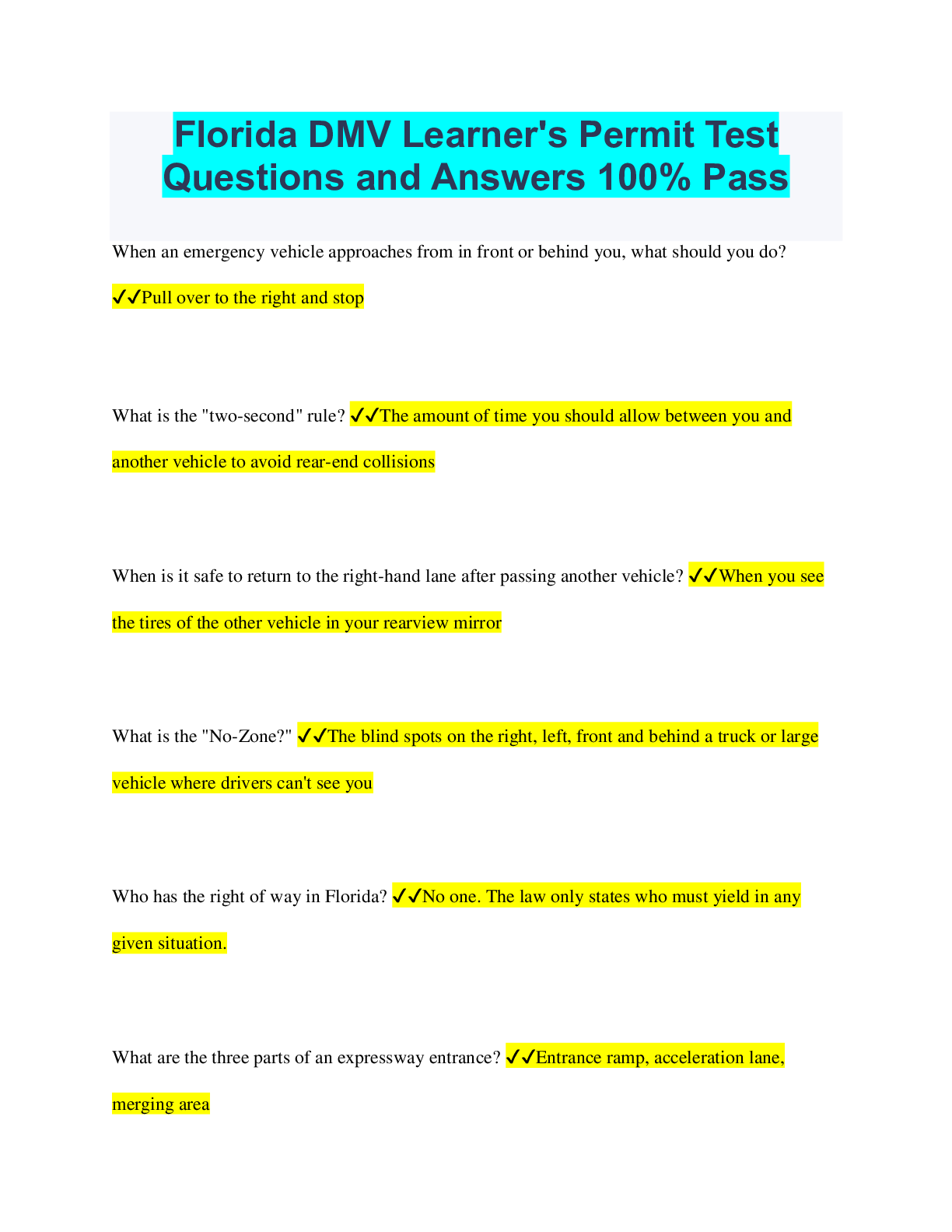
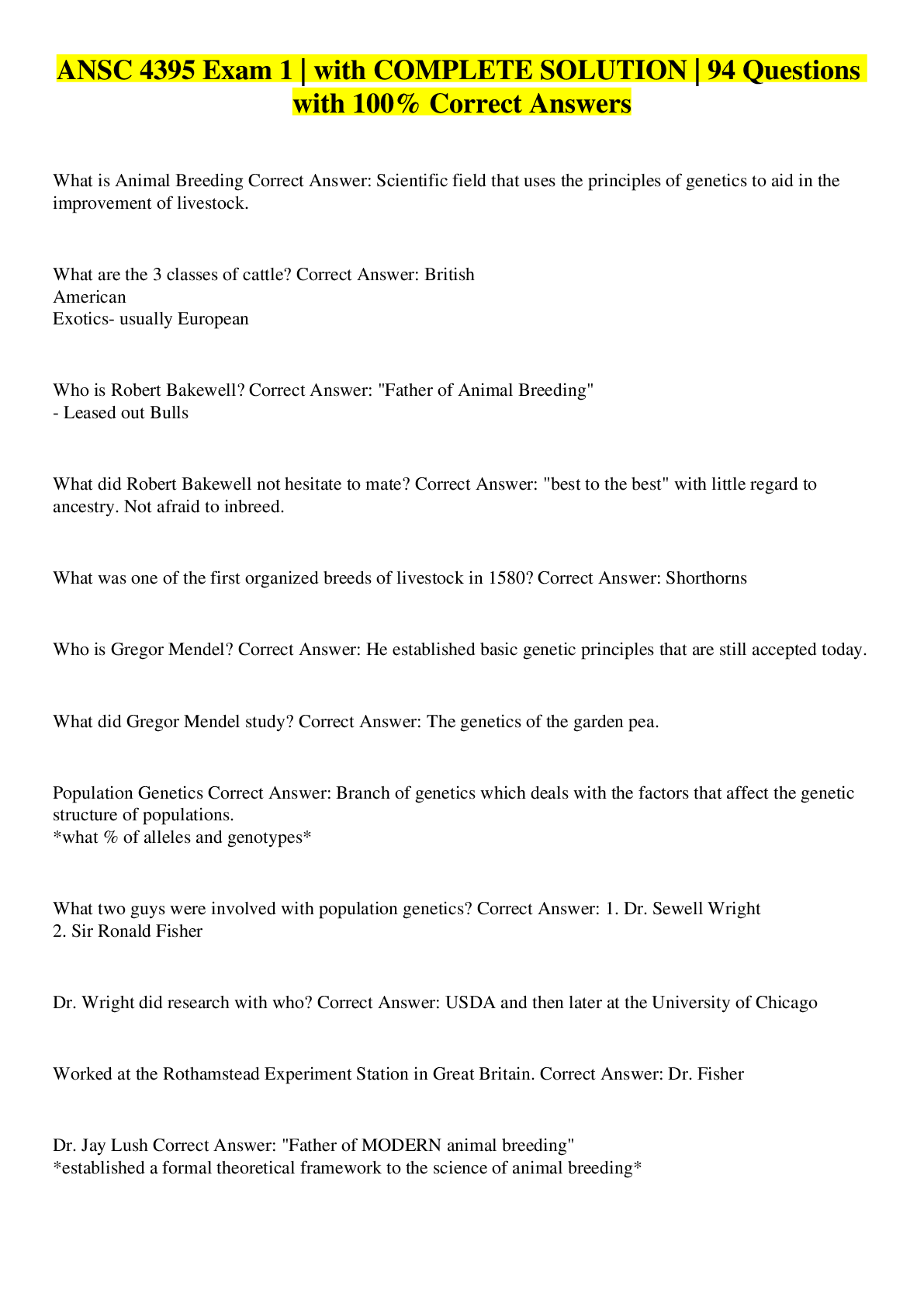

.png)





